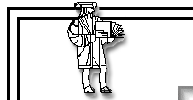KOSON GOLD STATER
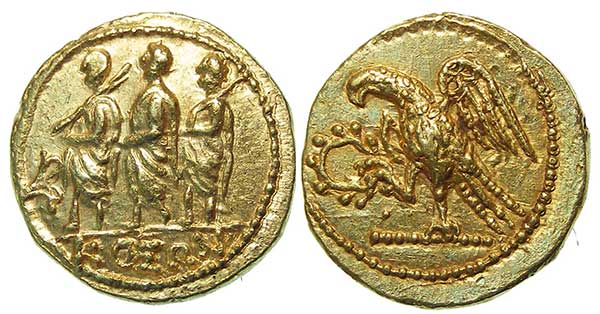
These coins known as Koson gold staters have been a mystery since a large hoard of them were found in the region of Transylvania in the 1543. There are two different theories of when and where they were minted, and what the inscription mean. I don't expect to solve this mystery to everyone's satisfaction, but I would like to present my observations of the evidence, which includes some recent metallurgical information, along with my interpretation of where that evidence points.
The first theory was circulating in the 19th century and assumed Koson staters were struck in 43 or 42 BC by Marcus Junius Brutus (assassin of Julius Caesar) using a treasure provided to him by the Roman Senate. He was tasked by the Senate with going to Thrace to raise an army to defend the Republic against forces loyal to the now dead Julius Caesar. The battle was fought at Philippi in 42 BC, with Octavian defeating Brutus. This theory assumed KOΣΩN was a Dacian king, possibly Cotiso, whose troops Brutus may have hired and paid with these coins which are normally found in modern Romania, ancient Dacia, arriving with the returning soldiers.
A second theory has gained favor recently, which assumes Koson staters were struck either in Dacia (modern Romania) or ancient Thrace (Northern Greece), possibly by the well documented King Cotiso or another King Koson not mentioned by ancient historians. This associates these coins with Geto-Dacian denarii which normally imitate Roman Republican silver denarii, and does not connection to Brutus or the Senate's treasure. The assumed date is a not clear but perhaps a decade or two after 42 BC, and uses the logic that being found in Romania means they were minted there. These coins are often listed as either Scythian from Dacia or Thracian from Northern Greece, but for the purposes of this article I will refer to them as Dacian as that is the region where they are usually found.
Both theories make sense, and can account for large hoards of them found in Romania, but both are problematic because of incomplete evidence including a lack any historical records that could refer to a King Koson (or similar) at that time. Recently there have been articles written claiming there are historical references to a King Koson, but as far as I can tell they do not actually exist and really name Cotiso which modern writers claiming he was also known as Koson.
I will go back to the basics and look at what evidence exists, including some recent metallurgical information that was not available when these earlier theories were put forward. I will also present a possible translation of the inscription.
THE DESIGNS
The obverse depicts three walking figures, usually with a monogram to the left that might be a BR, BA or even PRO, with the inscription KOΣΩN below. Some examples are missing the monogram. The obverse is loosely copied from Marcus Junius Brutus' denarius of 54 BC depicting an accensus walking before three figures representing L. Junius Brutus between two lictors, with BRVTVS below. On the Koson stater the accensus is not shown, BRVTVS has been replaced by KOΣΩN but if the monogram is a BR it was abbreviated and moved up and to the left.
L. Junius Brutus was one of the first consuls of Rome who in 509 BC over-threw Lucius Tarquinius Superbus, the last king of Rome. This lead to Roman becoming a Republic. M. Junius Brutus believed himself descended from L. Junius Brutus, so used this design as depicting important ancestral events was a common theme on Roman coins of this period. Although he did not know it at the time, the Ides of March in 44 BC, M. Junius Brutus would be one of the lead assassins of Julius Caesar in what he felt was defending that same Roman Republic but leading to a civil war with Brutus and Cassius going first to Asia, then to Greece to raise an army with which defend the Republic against the anti-Republican forces loyal to the deceased Julius Caesar and lead by Octavian.
In 509 BC the accensus walking before three figures represented a common foot soldier of low rank, while the lictors were higher ranking soldiers who carried arms and together three soldiers were body guards for the consul between them. This procession has fallen out of favor long before 54 BC when M. Janius Brutus issued his denarii, but had been reinstated in 58 BC by Julius Caesar when he became consul but while the lictors were still armed guards, the roll of accensus had become one of a harold to announce the Consul was approaching.
By leaving off the accensus off the Koson staters, they are removing the harold and that might mean the rank of the man between the lictors is of lesser rank. While there is no way to know for use, this could mean the man in the middle represents the people and Senate of Rome, who Brutus was trying to protect.
The 19th century theory Brutus issued the Koson staters was based on the obverse resemblance to the coins of Brutus, but I think we can take that one step further and consider how the reverse not copied from a coin of Brutus might have been chosen.
The reverse closely resembles the 70 BC denarius of Q. Pomponius Rufus, but with the eagle's head turned left and the scorpion and inscriptions left off. The eagle holds a wreath and scepter in its claws, which is very unusual and to the best of my knowledge does not occur on any other Roman coin. Eagles with wreaths are normally depicted holding the wreath in their beak, which symbolizes they are presenting it to someone. I believe the wreath and scepter in the claws represents the eagle ripping them away from someone.
Coins of Julius Caesar as dictator often depict him wearing a wreath while the reversed often show Venus holding a scepter. A statue of Caesar in the Louver in Paris depicts him wearing a wreath and holding the scepter as his symbols of power. When M. Junius Brutus (and friends) assassinated Caesar they essentially ripped his power away. It is my belief the eagle on Koson staters is depicted having ripping the symbols of power away from Julius Caesar.
Many Republic denarii of that period have obverse and reverse types that relate to each other. When I consider the obverse and reverse of Koson staters together the message could be that Brutus has ripped power away from Caesar and is now defending Republic from the anti-republican forcers once loyal to Julius Caesar and now lead by Octavian. There is no way to know what was in the mind of who ever designed these coins, but this would be consistent with a message Brutus would have wish to project.
Unfortunately nothing is known of why Q. Pomponius Rufus used the eagle design on his denarii but on the obverse (which I have not illustrated) has "S C" to the left, likely indicating the coins was struck for a special purpose of the Senate, possibly with funds provided from the Senate treasury. In 43-42 BC Brutus and Cassius were acting on behalf of the senate and had been provided with a treasure valued at 500,000 drachma from the state Treasure in Asia, delivered to them in Greece by the Quaestor Appuleius (ref. Cicero, Philippics, X.11; Appian, B.C. III.63). This suggests a parallel Brutus might have seen between himself and Rufus.
HISTORICAL CONTEXT
In 48 BC Dacian soldiers fought for Pompey at the battle of Pharsalus, against Julius Caesar. The King of Dacia at that time was Bruebista. Caesar won the battle and while Caesar appears to have pardoned Pompey's Latin soldiers fighting the Dacians had to flee, most likely back to Dacia. It appears Julius Caesar was worried about a future Dacian threat and planing an invasion of Dacia to end that threat, but that plan ended with his assassination in 44 BC. Within a few month Bruebista was also assassinated and Cotiso became King of Dacia.
Plutarch (Lucius Mestrius Plutarchus, born 46 to 119) wrote histories in which he recorded that in 43/42 BC Brutus received a treasure worth 500,000 drachma from the Senate treasury in Asia Minor, but it is not recorded what form the treasure took. It might have been silver, gold or a mix of the two, and it may ore may not have already been in Coin form. Tasked with hiring an army, and it is recorded some of those soldiers came to him through Northern Greece so may have been Dacians coming through Thessaly. Cotiso was now King of the Dacians and may have been motivated by help Brutus defeat Octavian because of the past history with Julius Caesar.
Plutarch recorded that in 43/42 BC Brutus received a treasure worth 500,000 drachma from the Senate treasury in Asia Minor, but it is not recorded what form the treasure took. It might have been silver, gold or a mix of the two, and it may ore may not have already been in Coin form. Tasked with hiring an army, and it is recorded some of those soldiers came to him through Northern Greece so may have been Dacians coming through Thessaly. Cotiso was now King of the Dacians and may have been motivated by help Brutus defeat Octavian because of the past history with Julius Caesar.
Appianus Alexandrinus (AD 95-165) wrote several books on Roman history. In "The Civil Wars" Book IV, he discusses various sources of funding for Brutus and Cassius during events leading up to the battle of Philippi, and it appears they were well funded. He mentions the same treasure coming from Senate funds (from a provincial treasury) as Plutarch, placing it at 16,000 talents. He also mentions a treasure given to him by Polemocratia, wife of a Thracian prince, asking for protection of her son (paragraph 75), but does not place a value on it, only saying it contained an "unexpected quantity of gold and silver" and was specific Brutus struck it into coins. Appian's time lines are sometimes a little confusing but as I read it Brutus received these funds and struck those coins after he arrived in Macedonia. This raises the question of what coins he might have struck, especially gold coins as there are nearly no known gold issues directly tied to Brutus.
A Dacian king supplying troops to Brutus almost certainly would have demanded payment in gold. There are some silver denarii of Brutus that can be directly associated with this campaign and would have been used for supplies and possibly to pay his Latin troops, but they are fairly rare so unlikely to have been struck in quantities large enough to pay for a hired Dacian army that large. There is no significant gold coinage of Brutus that can be associated with these events so there is a void in how Brutus might have paid them without considering the gold Koson staters, as well as group of Mithradatic style gold staters that might also come from this period.
TRANSLATING THE INSCRIPTION
Dacian was a distinct language, widely spoken across the region until the 5th century after which it became a dead language. It was a mostly oral with only two short written inscriptions known, which is not enough to tell us much about their grammar and language structure. Those inscriptions use a mix of Greek and Latin alphabets, although it is likely Greek letters were used prior to Trajan's annexation of Dacia (just after 100 AD) and the mix with Latin came in later. Beyond some personal names and place names, and a few words derived from them, little is now known of the Dacian language, other than it was clearly not a not a Greek dialect.
I propose that understanding the meaning of KOΣΩN requires it be split into two parts, using the Greek alphabet from the view of Brutus trying to write something the Dacians mint understand phonetically. KOΣ could be transliterated from COS using the Greek K for a Latin hard C so it remains phonetically COS which is the abbreviation of CONSUL. In Greek the suffix ΩN implies from the or of the. Technically it is plural but Greek inscriptions of the period often use it intending singular (see Kyri Kyriacos comments on this near the bottom). We do not know enough about the Dacian language to know if this suffix had meaning to them or if they even had an equivalent, but Brutus would have understood it and may have assumed the Dacians would as well. Thus KOΣΩN may be an attempt to write "from the Consul" in a way the Dacians might understand. Now consider the BR monogram could be short for Brutus, KOΣΩN BR then becomes "from the consul Brutus".
Others have suggested the monogram could also be PRO and if so the meaning would be come "from the Pro-consul" and as it could be plural it would imply both Brutus and Cassius. I do not favor this theory as it would require PRO to be in the Latin Alphabet, this PRO KOSON would mix Latin and Greek letters which I feel unlikely in the 1st century BC.
It has been pointed out that the Greek word for Consul was Hypatos, and suggested if he wanted that meaning he would have used it. Dacians were not Greek speaking and likely Hypatos was a Dacian word so it might not have been understood by them. Having recently fought along side the forces of Pompey the Dacians would likely have been familiar with the Roman military military Title of Consul and it's abbreviation as Cos as used on many Roman coins. Therefore Brutus attempting to write something in Greek letters that would sound out as "from the Consul Brutus", makes KOΣΩN BR as a possibility meaning of the inscription.
I consulted with Kyri Kyriacos, who studies Greek inscriptions and confirms there is nothing technically incorrect in a possible translation of KOΣΩN BR as "from the consul Brutus". Assuming the monogram is a BA there is also nothing technically incorrect with translating it as "KING KOSON" but that works if the inscription is in Greek and probably not in Dacian.
PHYSICAL CHARACTERISTICS
Koson staters with the BR monogram and from fresh dies have an odd choppy surface texture consistent with a celator preparing the die surface with a gouging tool. Most ancient dies had a flat polished surface and I know of only one series of coins from the middle to late 1st century BC that exhibits the same choppy textures:
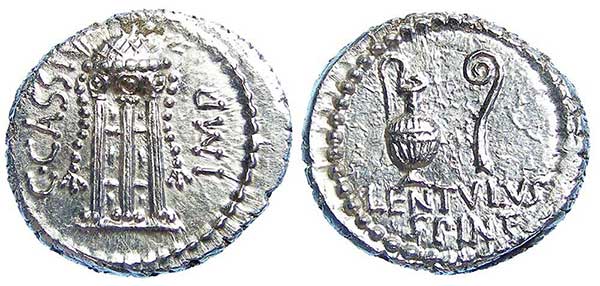
This denarius was issued for Cassius in conjunction with denarii of Brutus struck by their travelling military mint in 43 to 42 BC. This is the same mint Brutus would have used if he struck the Koson staters with BR monogram, which is evidence suggesting the dies for both types were cut by the same celators.
To summarize: The obverse and reverse designs are consistent with Brutus' political message. The inscription has a possible translation consistent with his political message. The die engraving features are consistent with other coins issued by Brutus' travelling mint. The likelihood he would have issued gold coins is consistent with the history of 42 BC. I therefore conclude these are coins of Brutus used as payment for Dacian mercenaries. This is the same theory people came to in the 19th century, but with more evidence to support it.
THE ALTERNATIVE THEORY
The alternative theory is that Koson gold staters were issued by a Dacian (or Thracian) king, imitating some earlier Roman coins. This assumes the monogram to the left is not BR but rather BA abbreviating Basileos, Greek for King. There are two problems with this theory. If the monogram is BA for Basileos then KOΣΩN has to be a King's name. The Dacian King at the time was Cotiso, who ruled from 44 to 9 BC and is well attested to by ancient Historians. It is difficult equate the spelling of Cotiso with Koson as the similarity is very vague. The T sound is critical to the Cotiso, so dropping it to turn it into Koson is problematic. The theory considers there might have been an unknown Dacian king named Koson but the ancient Historians are pretty clear Bruebista ruled to 44 BC and on his assassination Cotiso became King and ruled until 9 BC. There is no gap in which to insert another King unknown.
The earliest references to a Dacian King Koson appear in the 16th century, attempting to explain the inscriptions on these coins. With no earlier historical references to a King Koson, and other possibly meaning of the word, I find that theory difficult to accept. Another problem is the Dacians were not Greek speaking and Basileos was a Greek word, so there is no good reason it would appear on their coins at that time. A third problem exists which I will discuss after the metallurgy of the coins.
Dacian imitations of Roman silver denarii exist with sometimes randomly mix obverse and reverse designs, but all types are in silver and to the best of my knowledge the often barbarous inscriptions are clearly copied in Latin, not Greek. No Dacian coins name any King in Greek or any other language. The surface characteristics and die engraving styles have no parallel with the surfaces on the BR monogram Kosons. Nothing about the BR monogram Koson staters have any parallel in known genuine Dacian coins. Soon after 2000 a number of "new discovery" silver coins appeared on the market, some with KOSON on them, and while some people accept them my own belief is they are not ancient.
HOARD EVIDENCE
The first records of Koson gold stater was when a very large hoard was found in region of Transylvania in 1543, an area that would have been part of Dacian in the 1st century BC. The size of the hoard does not appear to be known, but was reported to be several thousand examples found with other gold objects. After that the coins were never rare in the numismatic record but most are likely examples from that hoard as there is not much in the way of records of significant numbers being found after that, until the late 1990's when a new group of Koson gold staters appeared in the numismatic market. I do not have much information on where they were found but there are rumors it was in the same general area as the 16th century hoard, suggesting it might be part of that original hoard not recovered in the 16th century.
The majority of Koson staters come to us in mint state and those that appear worn were actually struck with worn dies which can give the same look. This pattern only makes sense if they did not see significant circulation but were stored as a treasure soon after minting.
METALURGICAL EVIDENCE
On the Moneta-l discussion list a few years ago I was made aware of a metallurgical study of Dacian gold that included some Koson staters. Published by the Publishing House of the Romanian Academy, it is available as a PDF at ARCHAEOMETRALLURGICAL CHARACTERIZATION OF ANCIENT GOLD ARTIFACTS FROM ROMANIAN MUSEUMS USING XRF, MCRO-PIXE AND MICRO-SR-XFF METHODS, by Bogdan Constantinescu, et al.
The study includes metallurgical analysis of 12 gold bracelets assumed to be from the Orastie Mountain region near the Sarmizegetus Regia Dacian fortresses in Romania. Koson staters both with and without the BR monogram were also analyzed. The bracelets provided a bench mark for the placer gold mined and used in Romania, which can be comparison with Koson staters. All of the items tested, both coins and bracelets, were repatriated from the international antiquities trade, mostly in Germany, England and America. For purposes of this discussion I accept the bracelets are originally from Romania which was the bases of their repatriation.
Analysis of the bracelets shows they are from two gold sources in that region. They vary erratically between 78.2 to 92.9% gold, all containing a significant tin (expected as cassiterite tin ore is found in the same deposits). The study concludes they are of Dacian sourced gold used directly as mined without being refined. Although information is limited, the article seems to assume Dacians did not refine gold and I find nothing in other sources that suggests the Dacians understood how to refine gold, or felt a need to.
The Romanian Academy analysis of Koson staters found two distinct groups. Those without the BR monogram had were very similar to the bracelets with erratic purity and very similar tin content. Analysis of the Koson staters with the BR monogram showed they were consistently at or above 97% gold.
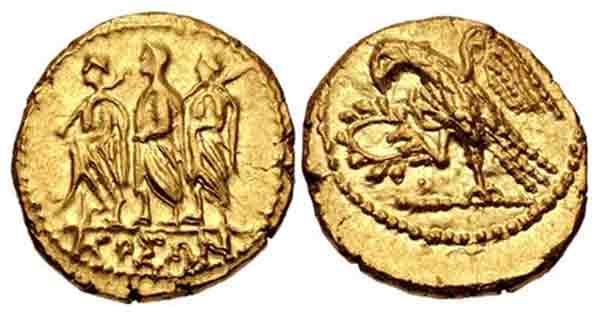
CNG E Auction 458, Lot: 21
On reviewing many images of Koson staters, it is clear those without the BR (or BA) monogram are over all struck from cruder dies with smoother surfaces, have inferior strikes often with more weak areas, with more centering problems on more poorly formed flans and as discussed above the metallurgy shows them to be struck on rough placer gold. The example above is one of the nicer struck examples without a BR monogram and many are much cruder.

Examples with the BR monogram issues are of consistently finer style, with the choppy surfaces described above, better struck on more consistently rounder flans, and as discussed above are on refined gold. This example is nice but by no means on the best struck examples with the BR monogram.
It is clear these are two different issues. Those without the BR monograms are consistent with being local Dacian minting while those with the BR monogram are consistent with Roman minting. Please note that these are my conclusions because the Romanian study only presented the raw data, drawing no conclusions from it.
CONCLUSIONS
With no metallurgical or minting connection between the BR and non-BR coins, I believe both theories about their origins are correct but only one for each type. I feel we can safely assign the BR monogram type as an issue of Brutus by his travelling mint in about 42 BC, with at lease part if that gold most likely from the treasure provided by Polemocratia, although he likely had other gold that might have also been used. We can also safely assign those without the BR monogram as local Dacian minting, most likely about 42 BC or soon after. It only makes sense Dacian imitations would be struck at least slightly later than the Roman type they copy. At least 90% of the known specimens have the BR monogram.
This brings us back to the meaning of the KOΣΩN BR inscription. If my reading of KOΣΩN BR as "from The Consul Brutus" is correct, KOΣΩN without the BR just means "from the consul" with Brutus' name removed. It makes sense the local Dacians might drop the BR from their imitative coins, especially after Brutus lost the battle of Philippi. The missing BR monogram on those minted in Dacia is inconsistent with it as a BA monogram short Basileos (Greek for King) as there would be no reason to drop it if Koson was the name of one of their kings. I see little possibility the coins name a King Koson.
Both types are found together in only a few, and possibly only one Romanian hoard and very few specimens appear to have circulated. I originally assumed if Brutus struck these coins to hire Dacian troops he would been paid directly to those troops. They would have then brought them back to Dacia. The hoard evidence speaks against this as that would have resulted in them finding their way into circulation and most would be found in circulated condition and over a wide area in many small hoards. What makes more sense is Brutus negotiated for troops controlled by King Cotiso, payed the treasure directly to Cotiso who then sent his army. The pay for those troops would have been handled by Cotiso and there is no reason he needed to use these exact coins to pay them, so the coins became part of Cotiso's treasury.
I admit I do not have an explanation of why Dacian imitative examples were stuck, but the metallurgical study proves they were. If I find more information that sheds light on that I will update this page.
A FEW FURTHER NOTES
With respect to the translation of KOΣΩN as the plural of KOS as I asked Kyri Kyriacos about this, and he sent me the following explaining it need not be. I have quoted him exactly with his permission. Note English is a second language for him and considering that I thing he did very well:
"as a person who studies inscriptions it does make me have a wry smile when coin collectors want precise translations for coins when in the most part the words are nearly always abbreviated.technicaly speaking they are right but it is not an exact science.the koson coin is a one off coin struck by what we believe to be travelling mint in a time of war.the coin was probably created by a roman who like you said may have not been fluent in greek i dont think much thought was given to the grammar of the coin at the time.your kos translation for the singular or the plural could both be right.you are not going to get agreement from everyone,some may say kos=cos is not right full stop plural or not. there are many inscriptions from this period of 200 bc -200 ad with many mistakes especially in spelling from greek to roman.
on an egyption/roman greek inscription b.f.cook says "the divisions between words are marked by oblique strokes and breathings and accents appear sporadically,not always in the form that grammarians would consider "correct" there were many mistakes made.do you know that one of the most famous greek inscriptions the rosetta stone is litterd with mistakes.its up to you if you want to change it but to be honest either one could be right.even now in modern greek people from cyprus,crete,and the islands use different words altogether and say things in a different way and its the same in ancient greek there were maybe 40 different dialects and allot of what we do is guess ... kyri."
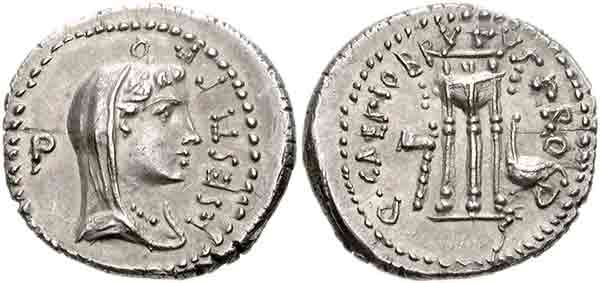
IMAGE FROM CNG COINS
Recently someone commented Brutus never officially held the titles of Consul or Pro Consul, which appears to be true. However on this coin issued Quintus Servilius Caepio Brutus (a name he adopted briefly after being adopted by an Uncle), we see the reverse reads Q CAEPIO BRVTVS PRO COS. It was issued in the spring or summer of 42 BC, just briefly before he would have struck the Koson staters, but from the travelling military mint.
| 